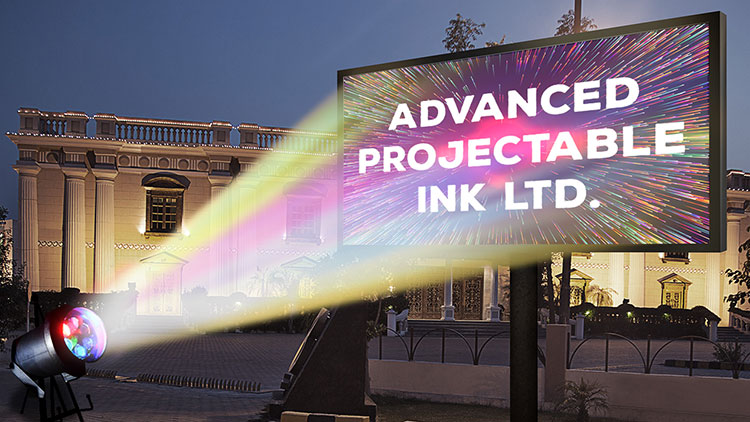Using existing laser light technology processes, in combination with breakthroughs made in sub-atomic particle physics discovered during unconnected research on the Hadron Collider project, the Cambridge think-tank has developed an ink that can be broken down into its constituent electron, proton and neutron parts, allowing it to be fired, or projected, through the air by laser.
Spokesperson for the Cambridge research facility, Dr. Steven Flairpool, elaborates: “The technology itself is very difficult to explain, but – to simplify – imagine a regular TV projector projecting an image onto a wall. Now imagine that projected image becoming permanent through the beaming of an ink that has been broken down in a super-heated vacuum to its particulate form, thereby leaving a permanently-printed image on the substrate (in this example, the wall).
“Because we are breaking the ink down at a sub-atomic level, it allows us to effectively deconstruct the ink and reconstruct it directly onto the substrate, in a form that is entirely specific to and compatible with that substrate. No primers or curing are necessary. The technology is completely adaptable; we could even project ink onto human skin! The potential markets that this technology could be adapted for are almost endless.
“We ultimately envisage an entirely portable printing process that is removed from print factories; one that instead allows printing in situ at any location. Images can be projected and thus printed directly onto billboards, vehicles, windows, walls, fabrics, clothing and more.”
“The technology can also be utilised for the printing of large and complex irregularly shaped three dimensional objects such as buildings or even mountain sides, through adaptation of technology currently utilised in projection mapping – literally substrates of any shape, any size and any material can be printed. This will completely revolutionise the entire out-of-home printing process.”
Amazingly print durability can also be scientifically controlled, as Dr Flairpool explains “The advanced chemical structure of the ink allows us to change it’s visibility status to a specific lifetime or expiry date that is chosen by the operator at time of printing. Prints can be programmed so the ink effectively turns to an ‘off’ state in days, weeks, months or years, depending on the nature of the specific print application or campaign.”
Already fully-patented, this technology breakthrough doesn’t just disrupt current display print technologies, it has the potential to render some of them practically obsolete overnight.
Aggressive share trading is expected when the market opens this morning; preliminary discussions with interested parties generated investment and even outright acquisition offers that have led to an increase in the initial IPO share value – by a factor of multiples – this prior to shares becoming publicly available.



